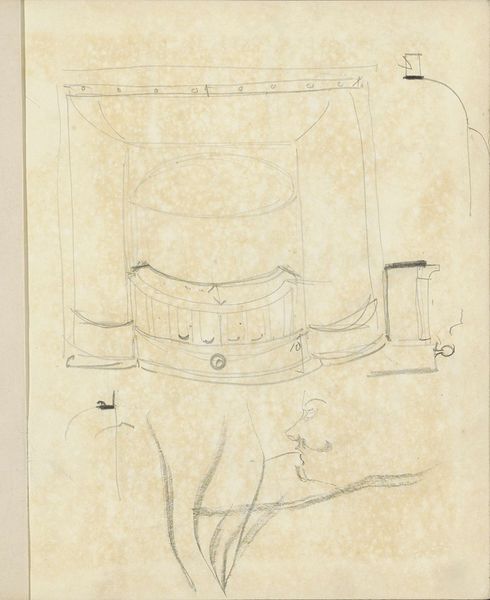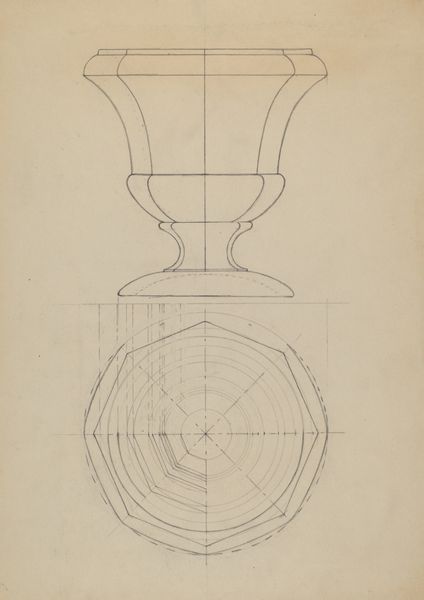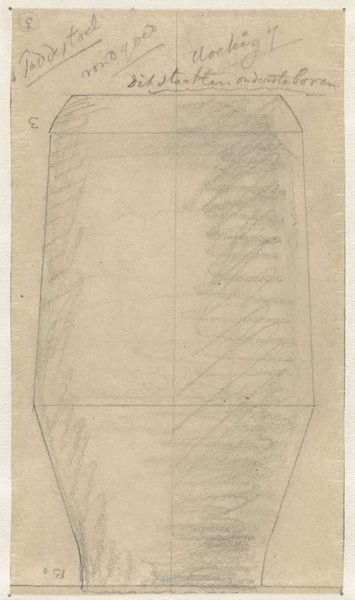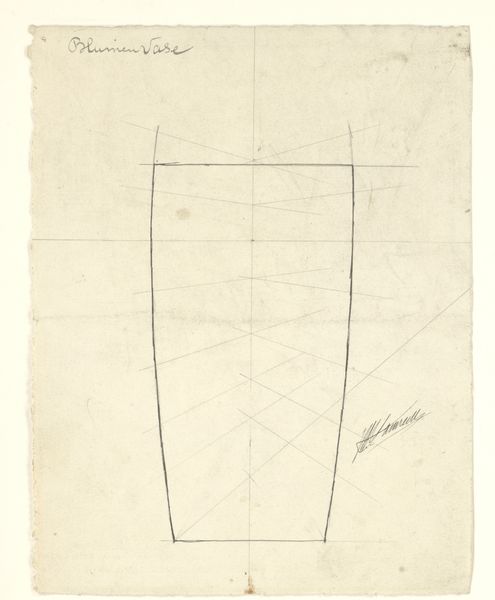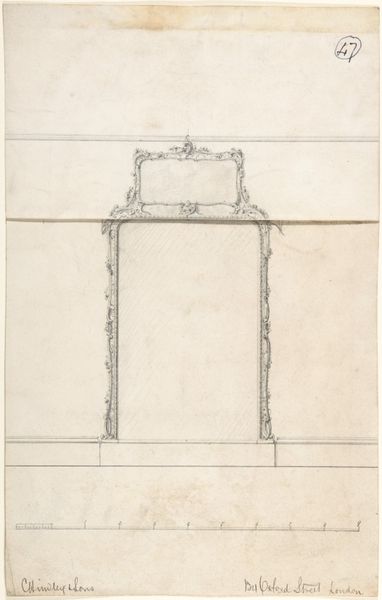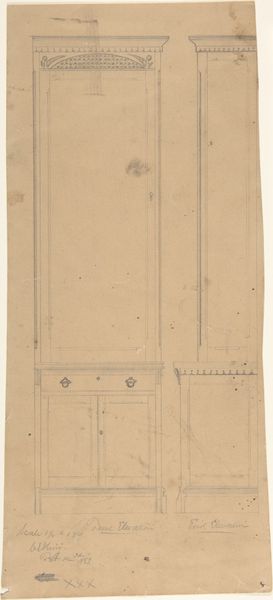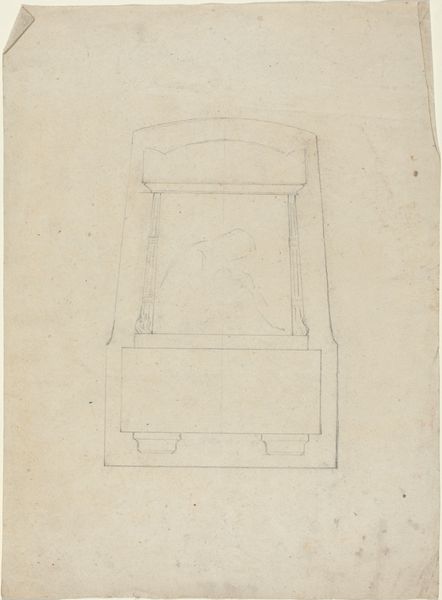
drawing, paper, pencil, architecture
#
architectural sketch
#
drawing
#
paper
#
form
#
geometric
#
pencil
#
line
#
architecture
Dimensions: height 220 mm, width 185 mm
Copyright: Rijks Museum: Open Domain
Curator: We're looking at "Ontwerp voor een doopbeker," a design for a baptismal font by Mathieu Lauweriks, dating from between 1874 and 1932. It’s rendered in pencil on paper. What’s your first impression? Editor: The symmetry is immediately striking, almost unsettling in its rigidity. The precision and geometric structure give it a cold, impersonal feel. Curator: And yet, consider the period. Lauweriks was deeply involved with the Theosophical Society. His commitment to geometric principles wasn’t just aesthetic; it was spiritual. He sought to reveal universal harmonies through these forms. The font becomes less a purely religious object and more a symbol of cosmic order. Editor: I concede that the symmetry is ordered and neat, and one could even suggest a sense of balance, but is it a truly harmonious balance? The pencil lines are hesitant. It has an unfinished quality which undercuts any aspiration for higher meaning or a kind of ‘cosmic’ balance. Curator: Perhaps the hesitant lines mirror the internal spiritual searching common in Theosophical circles. The drawing reveals process, not a definitive answer, suggesting continual becoming. In relation to the font’s potential function, the imperfect state perhaps reflects the imperfect state of one awaiting baptism. It’s suggestive of the messiness of transformation, not a pristine endpoint. Editor: An interesting theory, but let's think of what makes Lauweriks' image coherent. We can explore the stark contrast between the sharp, geometric lines and the muted tonality of the paper, how these two factors alone cause such an image to become an embodiment of clarity. We are speaking here of the semiotics of line. Curator: It’s crucial, too, to situate Lauweriks’ interest within a larger historical context. How do these efforts at the turn of the century connect with contemporaneous artistic trends exploring form as symbolic of inner spiritual truths? How might its meaning be affected by current debates around sacred space? What are its implications when viewed in connection with religious representations, gender, or class? Editor: Regardless, to observe such form creates meaning by its design, from form to implementation: such an intentional construction reveals the basis for decoding Lauweriks. Curator: His creation definitely prompts further thought. Editor: Agreed, his lines encourage an inquisitive mind, for certain.
Comments
No comments
Be the first to comment and join the conversation on the ultimate creative platform.
